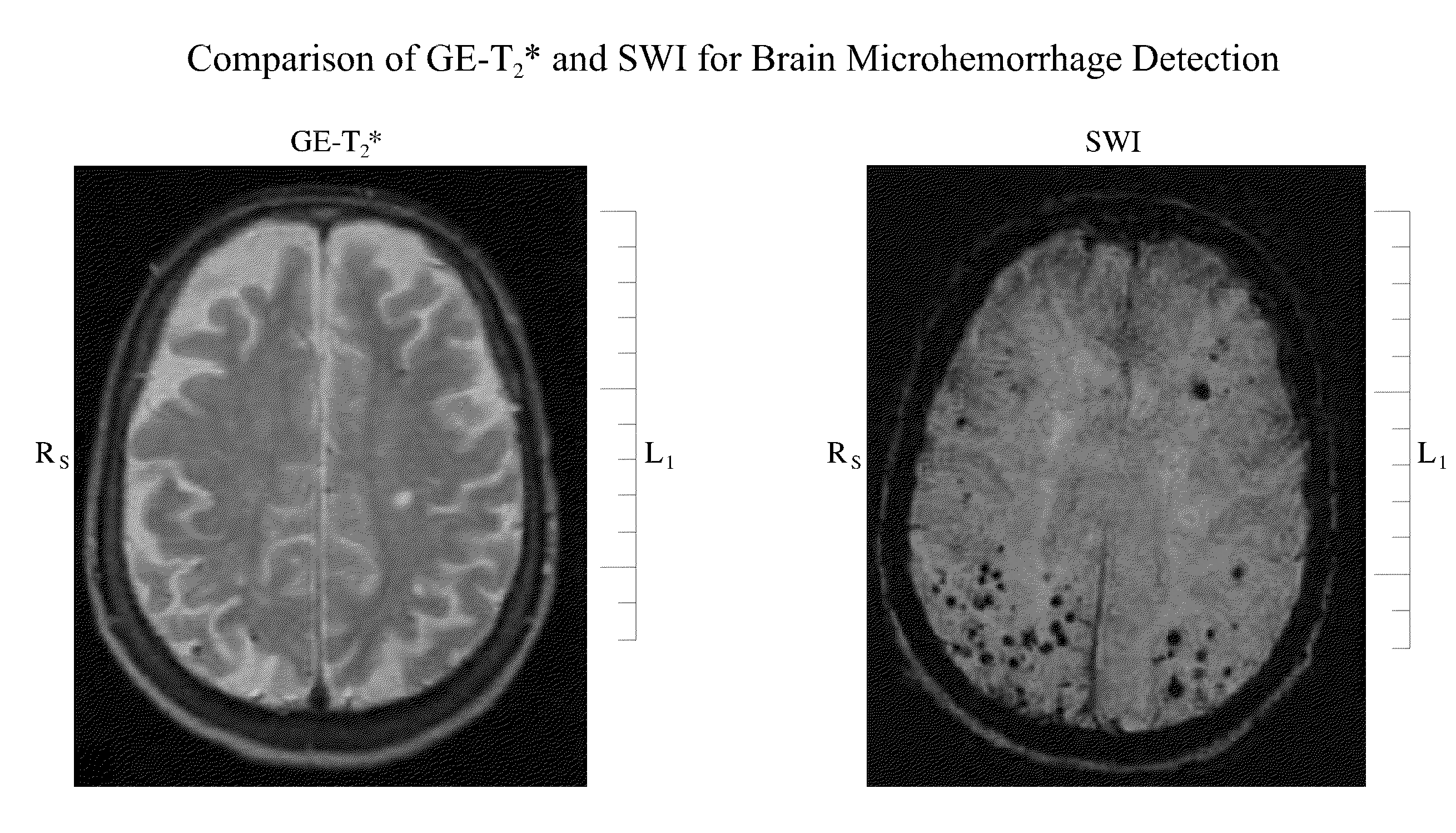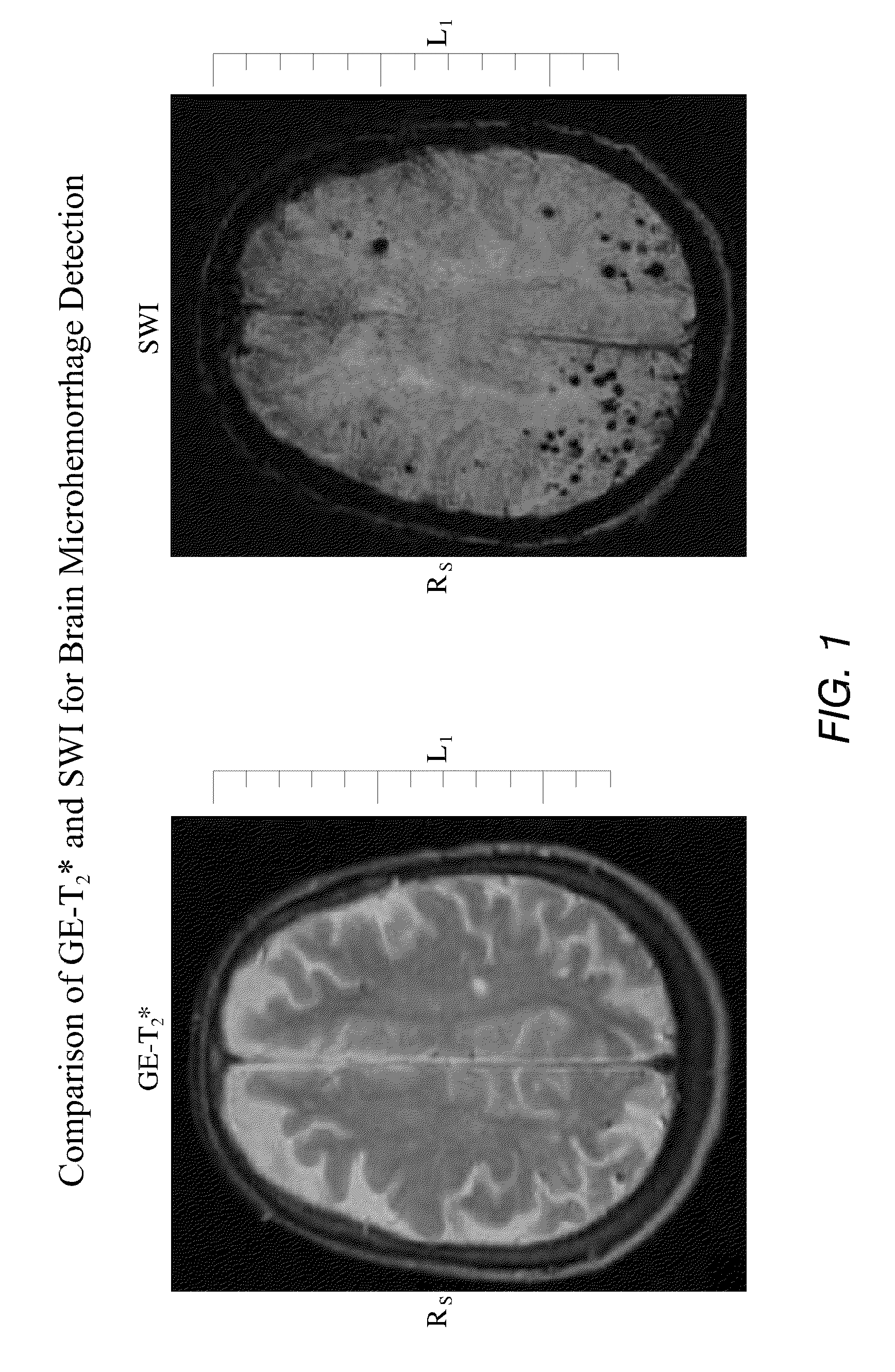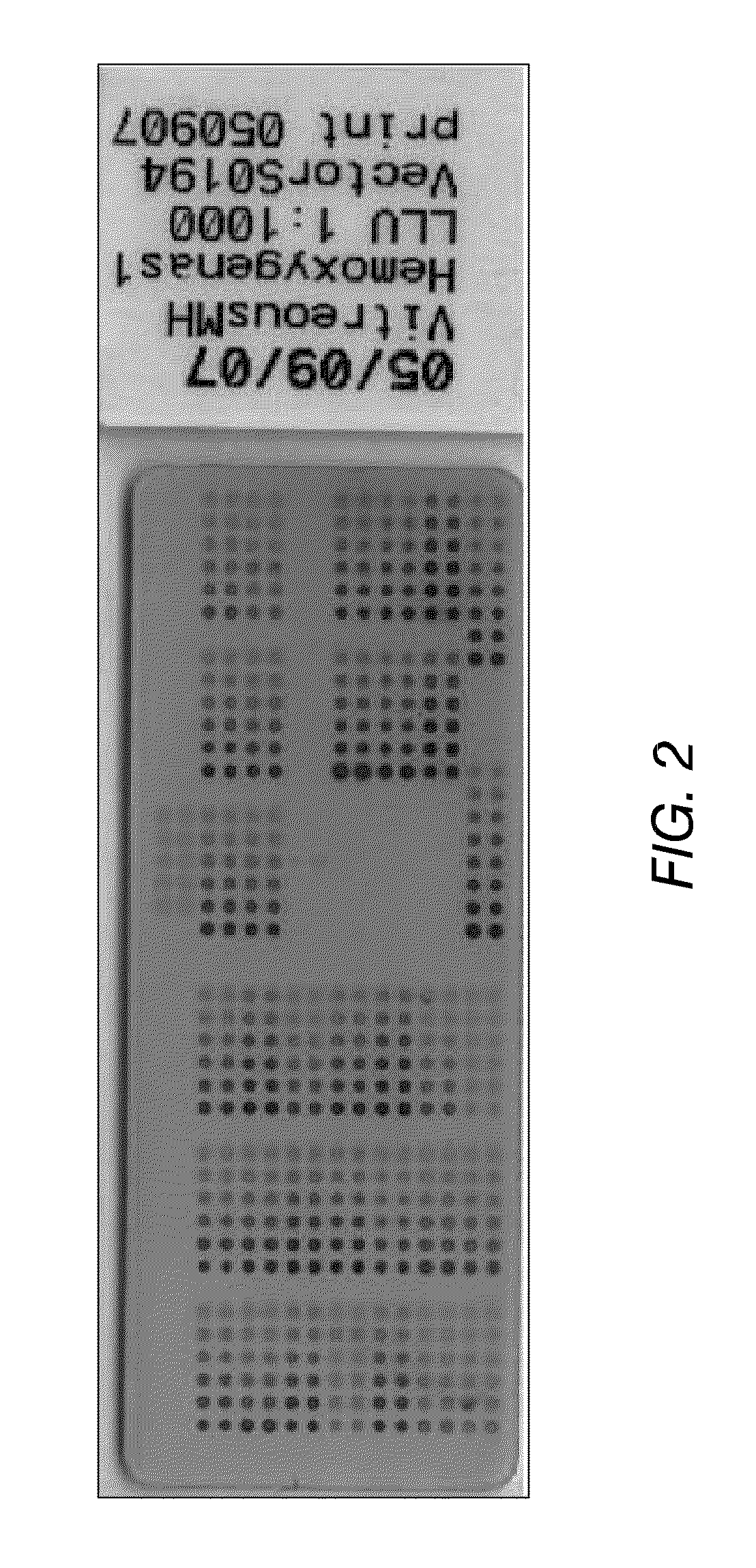Inhibition of brain enzymes involved in cerebral amyloid angiopathy and macular degeneration
a brain enzyme and amyloid angiopathy technology, applied in the field of inhibition of brain enzymes involved in cerebral amyloid angiopathy and macular degeneration, can solve the problems of low treatment efficiency, low treatment efficiency, and inability to effectively treat the vascular aspect of alzheimer's disease-cerebral amyloid angiopathy (caa) that is not well-developed, so as to prevent weakening and bleeding
- Summary
- Abstract
- Description
- Claims
- Application Information
AI Technical Summary
Benefits of technology
Problems solved by technology
Method used
Image
Examples
example 1
Therapeutic Trial of HO-1, HO-2, MMP, Caspase Inhibitor and Metalloporphyrin Inhibitors in the CAA Mouse Model
[0064]A mouse model of CAA will be studied for the therapeutic effects of agents directed to brain HO-1, HO-2, MMP, caspase inhibitor or metalloporphyrin inhibition.
[0065]APP transgenic mice will be evaluated using neurologic, pathologic, and biochemical parameters. Both APPDutch (pure CAA) and APPswe (mixed parenchymal amyloid and CAA) transgenic mice will be evaluated. Dr. Jucker (Tübingen) will provide the transgenic and control mouse models. Mouse SWI-MR brain imaging will be conducted at 11.7T at LLUMC. The natural history and neurologic course of the transgenic mice will be defined as well as neuropathology and LCM gradient assays at LLUMC, George Mason University (GMU), and UCLA. Once the natural history and phenotype of the model has been established, treatment trials with candidate siRNAs (siRNA to HO-1, HO-2, MMPs, a caspase inhibitor, or metalloporphyrin) and Mps ...
example 2
Selection of Targeting siRNAs
[0071]This Example illustrates the selection of targeting siRNAs.
[0072]The sequences of targeting siRNAs, such as, for example, HO-1, HO-2, MMP, caspase inhibitor or metalloporphyrin targeting siRNAs, can be been checked for theoretical specificity against the mouse transcriptome by blast searches against the mouse genome using NCBI. For example, the following steps and guidelines can be taken to maximize success in siRNA target sequence selection. (1) Find the regions of a cDNA to choose target sequences. A target sequence is preferably specific to the target gene and shows little or no significant homology to any other genes. Using the blast search, regions of the target cDNA with no or low homology to other genes can be identified, from which candidate siRNA target sequences can be chosen. (2) A target sequence preferably starts with a “G” because RNA Polymerase III begins transcription with a “G” from the U6 promoter. (3) Preferably, avoid strings of...
example 3
Diagnosis of Cerebral Amyloid Angiopathy with SWI MR Imaging
[0073]This Example illustrates the use and advantages of SWI imaging for earlier and precise diagnosis of Cerebral Amyloid Angiopathy (CAA).
[0074]Mounting evidence indicates that CAA with secondary brain microhemorrhages (MH) plays an important yet underestimated role in the pathogenesis of sporadic late onset dementia. A small amount of extravasated blood in the brain results in an enlarging gradient of neuronal and neuropil damage termed the “perifocal reactive zone.” Rapid perivascular heme diffusion results in hyperexpression of brain heme oxygenase-1 (HO-1) with resulting free ferrous iron, carbon monoxide and biliverdin—all potentially neurotoxic at a volumetric distance from the MH. Studies in experimental animals have established that inhibition of hemorrhage-induced brain HO-1 by metalloporphyrins (Mps) provides neuronal protection. Thus, in view of the evidence for increasing microbleeds in the aging brain a thera...
PUM
| Property | Measurement | Unit |
|---|---|---|
| concentration | aaaaa | aaaaa |
| concentration | aaaaa | aaaaa |
| concentration | aaaaa | aaaaa |
Abstract
Description
Claims
Application Information
 Login to View More
Login to View More - R&D
- Intellectual Property
- Life Sciences
- Materials
- Tech Scout
- Unparalleled Data Quality
- Higher Quality Content
- 60% Fewer Hallucinations
Browse by: Latest US Patents, China's latest patents, Technical Efficacy Thesaurus, Application Domain, Technology Topic, Popular Technical Reports.
© 2025 PatSnap. All rights reserved.Legal|Privacy policy|Modern Slavery Act Transparency Statement|Sitemap|About US| Contact US: help@patsnap.com



